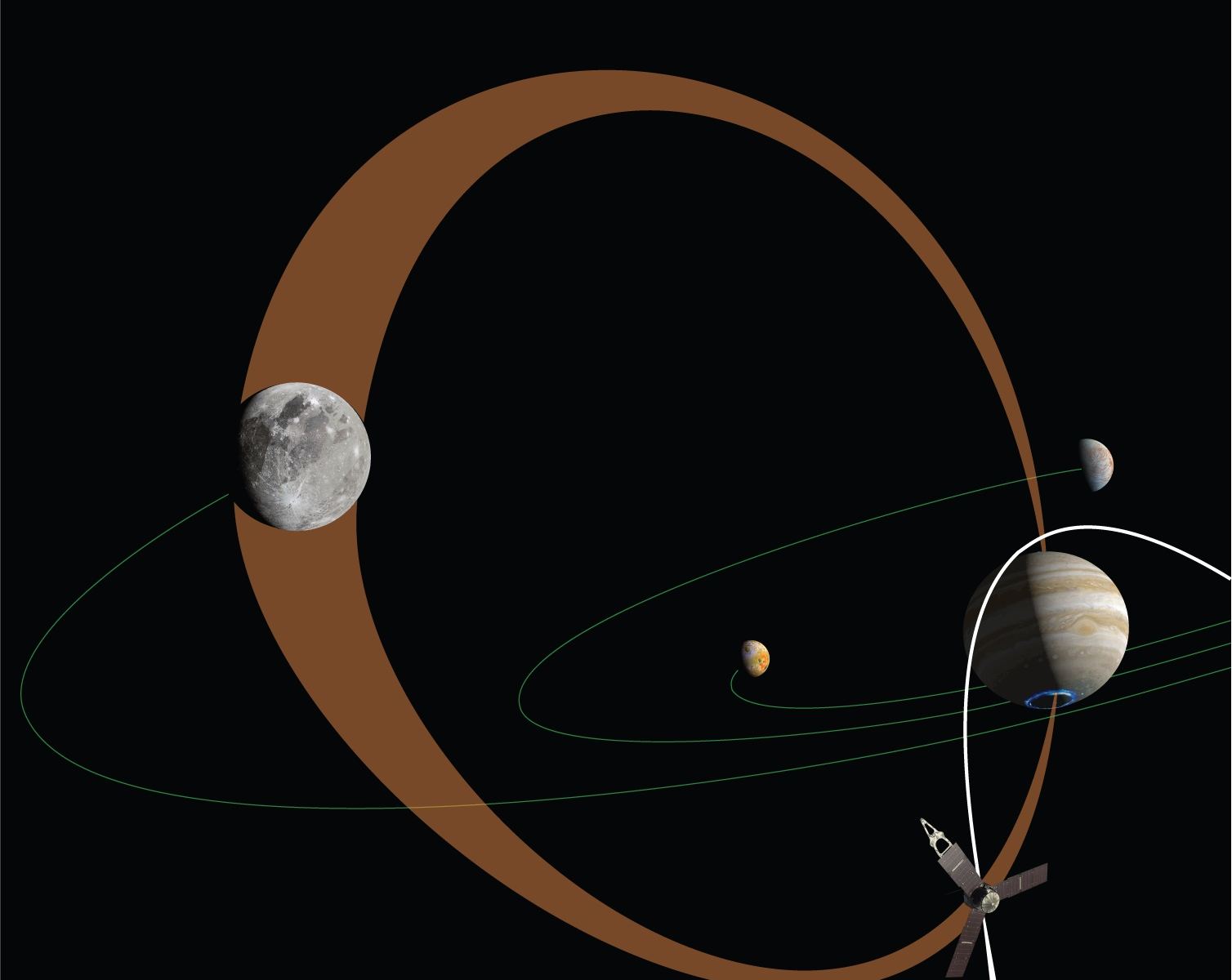On July 5th, 2016, NASA’s Juno spacecraft arrived at Jupiter and began its four-year mission (which has since been extended to 2025) to study the gas giant’s atmosphere, composition, magnetosphere, and gravitational environment. Juno is the first dedicated mission to study Jupiter since the Galileo probe studied the system between 1995 and 2003. The images and data it has sent back to Earth have revealed much about Jupiter’s atmosphere, aurorae, polar storms, internal structure, and moons.
In addition, the Juno mission has allowed astronomers to learn more about how magnetic interaction between some of Jupiter’s moons and its atmosphere leads the gas giant to experience aurorae around its northern and southern poles. After analyzing data from Juno’s payload, a team of researchers from the Southwest Research Institute (SwRI) observed how streams of electrons from Ganymede (Jupiter’s largest moon) leave an “auroral footprint” in Jupiter’s atmosphere.
Specifically, they examined data obtained by Juno on November 8th, 2020, when it passed through the intense beam of electrons that travel along the magnetic field line that connects Ganymede to Jupiter. By studying the particle population along this beam, while also remotely sensing the associated auroral emissions, they were able to gain new insight into the mysterious processes creating the shimmering lights. The paper that describes their research was published in Geophysical Research Letters.

Dr. Vincent Hue, a research scientist from the SwRI and a member of the Juno mission team, was the lead author of a paper outlining the results. As he explained in a recent SwRI press release:
“Jupiter’s most massive moons each create their own auroras on Jupiter’s north and south poles. Each auroral footprint, as we call them, is magnetically connected to their respective moon, kind of like a magnetic leash connected to the moon glowing on Jupiter itself.”
On Earth, the Aurora Borealis and Australis (aka. the “Northern” and “Southern Lights”) are the result of solar particles reaching Earth’s magnetosphere. These particles are funneled by magnetic field lines towards the polar regions of Earth’s atmosphere, where they produce dazzling displays of light. The situation is similar for Jupiter, where aurorae are caused by interactions between electrons in its massive magnetosphere and molecules in its atmosphere.
However, Jupiter’s aurorae are far more intense than Earth’s, and its largest moons (Io, Europa, Ganymede, and Callisto) also experience aurorae in their tentative atmospheres. Said co-author Dr. Jamey Szalay, a space physics research scientist from Princeton University:
“Prior to Juno, we knew that these emissions can be quite complex, ranging from a single auroral spot to multiple spots, which sometimes trail an auroral curtain that we called the footprint tail. Juno, flying extremely close to Jupiter, revealed these auroral spots to be even more complex than previously thought.”

The role played by Ganymede in this auroral activity is of particular interest because of a unique characteristic it possesses. Ganymede has its own magnetic field, unlike every other moon in the Solar System (and every rocky planet aside from Earth). Similar to how a dynamo effect in Earth’s interior leads to Earth’s magnetosphere, Ganymede’s magnetic field is believed to result from tidal flexing that leads to action between its liquid outer core and solid inner core.
The interaction between Ganymede’s smaller magnetosphere with Jupiter’s massive magnetosphere creates waves that accelerate electrons along the gas giant’s magnetic field lines. The polar orbit that the Juno mission causes it to fly through this electron “thread,” allowing the spacecraft to study the particle environment using its Jovian Auroral Distributions Experiment (JADE), Ultraviolet Spectrometer (UVS), and Fluxgate Magnetometer (MAG).
Where JADE measured the electrons traveling along the magnetic field lines, the UVS imaged the related auroral footprint in Jupiter’s atmosphere. In this way, Juno measured the electron “rain” and immediately observed the UV light it created when it reached Jupiter’s atmosphere. However, whereas previous Juno measurements showed that large magnetic perturbations accompanied the electron beams, Juno observed no perturbations this time.
According to the team’s analysis, these findings might confirm a decade-old theory regarding the morphology of auroral footprints. According to this theory, electrons accelerated in both directions along the beam are responsible for the multi-spot dance of auroral footprints. In January of 2021, NASA extended the Juno mission, setting a new end date for September 2025 (or whenever the spacecraft runs out of fuel).
This second mission extension will allow Juno to study Jupiter’s moons more closely in anticipation of future missions like the ESA’s JUpiter Icy Moons Explorer (JUICE), which is scheduled to launch in 2023 and arrive around Jupiter by 2031. This mission will focus on Ganymede and conduct a flyby of Europa. Meanwhile, NASA’s Europa Clipper mission will arrive around Jupiter by 2030 and spend the next four years (barring extensions) studying Europa exclusively.
“The Jupiter-Ganymede relationship will be further explored by Juno’s extended mission, as well as the forthcoming JUICE mission from the European Space Agency,” said Hue. “SwRI is building the next generation of UVS instrumentation for the mission.”
Further Reading: SwRI

